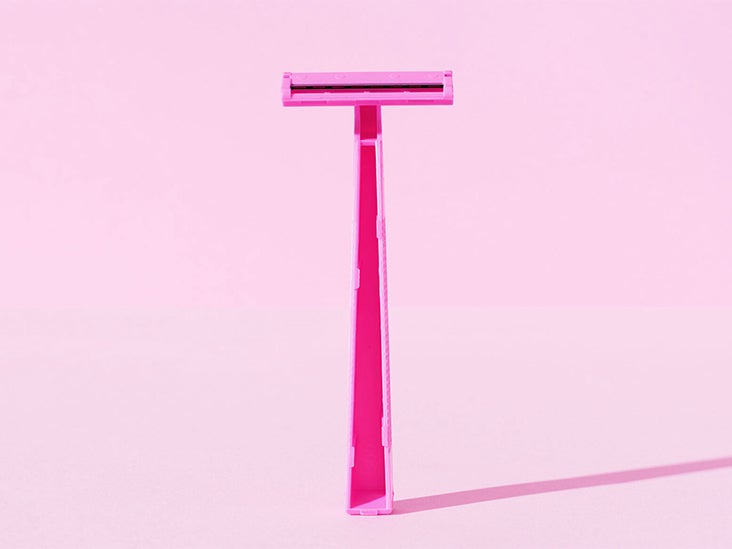Table Of Content

Other shaving side effects include ingrown hairs, cuts, and pimples. Shaving does not change the rate of growth, color, or thickness of hair, according to Annie Gonzalez, MD, a board-certified dermatologist at Riverchase Dermatology in Miami. No — shaving hair doesn't change its thickness, color or rate of growth. Shaving doesn’t impact how quickly your hair regrows.
Shaving Tips For Your Pubic Area
11 Best Face Razors for Women of 2024 - Good Housekeeping
11 Best Face Razors for Women of 2024.
Posted: Fri, 15 Mar 2024 07:00:00 GMT [source]
The misconception likely stems from the appearance of hair regrowth after shaving. When hair grows back, it may initially appear darker or coarser due to the blunt edge created by shaving. However, this is purely a cosmetic effect and does not indicate any changes in the hair’s thickness or density. To minizine risk of irritation, razor bumps and ingrown hairs, our experts recommend shaving in the direction of the hair growth.
What makes hair grow thicker?
Shaving cuts off the dead hair that’s located that the surface of your skin, so it’s not getting rid of the hair that grows under your skin like other hair removal processes. It’s nearly impossible to affect the growth rate, hair thickness, or color of your body hair with shaving. Contrary to popular belief, shaving does not make hair thicker.
Does Shaving Make Hair Grow Thicker?
You might switch up hair removal methods depending on the area you’re working with. Waxing pulls the hair from the root, so when they grow back it takes them longer to become visible above the skin, even though they’re growing at the same rate. It also means that when they appear above the skin the hairs have a naturally tapered end which makes them appear finer, and less visible. Discover the beauty of radiant, healthy skin with GlowskinCare, your go-to destination for specialized skincare and hair removal solutions.
The roots of the hair are formed with blood and proteins. Shaving gives the hair a blunt tip, which might feel coarse or “stubbly” for a while as it grows out, according to the Mayo Clinic. During this phase, the hair may appear darker or thicker than before, but it’s really an illusion. While there is no specific way to slow the regrowth of your hairs or encourage them to grow back softer shaving, there are methods that can help you get your smoothest shave yet. Dr. Garshick and Dr. Miller share their intel below.
Does Hair Really Grow Back Thicker After Shaving? Experts Tackle the Common Myth
Then samples from both legs were again carefully collected. Shaving at the same intervals as in the previous collection, and examining the hair in identical fashion. … This experiment gave additional evidence that shaving does not make hair grow faster or stimulate new hairs to grow. So shaving doesn’t make our hair thicker, but there are some hair removal methods out there that do as they remove the follicle. These methods can harm the follicle over time leading the hair to grow back less dense and with a finer texture. Waxing and laser hair removal are both methods that remove the follicle.

The very act of cutting may make hair appear thicker for a short time. A human hair shaft is like a pencil or javelin that tapers at the end. So when a razor slices away the tip, it may appear that the remaining hair, and subsequent stubble, is thicker or darker than it was before the cut. Those short hairs, sticking straight up from their follicles, may even appear coarser. But cutting away part of the hair does not typically change anything about that regrowth process. The tapered hair you had is the hair you’ll get back.
Don’t let this age-old misconception stop you from your preferred grooming habits. The dark shade of hair regrowth may also be more noticeable than you’re accustomed to. If you have lighter skin, you may notice new hairs even more. It isn’t attributed to the shaving process whatsoever.
There’s a bit more variation when it comes to leg-hair growth. According to Shays, a mixture of vellus and terminal hairs cover the legs of both men and women, which can range in density and color. During puberty, some of the vellus hair follicles on the legs become terminal hair follicles, resulting in thicker, faster-growing hair.
Laser removal zaps hair from the follicle and can either cause it to grow back thinner or to stop growing back at all, but it can be costly. Some hair removal methods, such as laser hair removal or waxing, can lead to reduced hair growth over time. These methods target the hair follicle, inhibiting future growth and potentially resulting in finer, lighter hair over time.
Hair Doesn't Actually Grow Back Thicker After Shaving, But Here's Why It Looks That Way - Bustle
Hair Doesn't Actually Grow Back Thicker After Shaving, But Here's Why It Looks That Way.
Posted: Thu, 01 Oct 2015 07:00:00 GMT [source]
Still, the myth lives on, even almost 100 years later. This may be due to the fact that hair regrowth after shaving often has a different appearance. + The modal amount of hair growth increased in direct proportion to the increase in the time period.

No comments:
Post a Comment